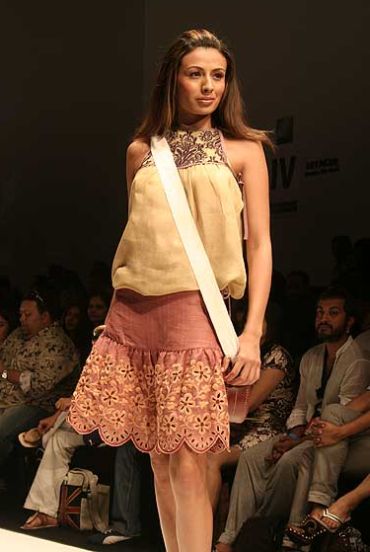
The discerning Indian consumer as well as the designers seem to have had enough of the exotic Indian look. Trendy new couturiers are exploring the contemporary fashion scene from a new angle. Ritusmita Biswas takes a peek at the alternative fashion scene.
Indian fashion does not need to mean 'exotic' with a capital 'E' anymore. Trendsetters seem to have taken a respite from the usual fare of jewel-studded lehengas and Swarovski-embedded halter tops. The trend now seems to go for simple -- be it khadi or ethnic Indian silk modernised with contemporary patterns. The quest for simplicity and innovativeness in designs seems to set the mood humming.
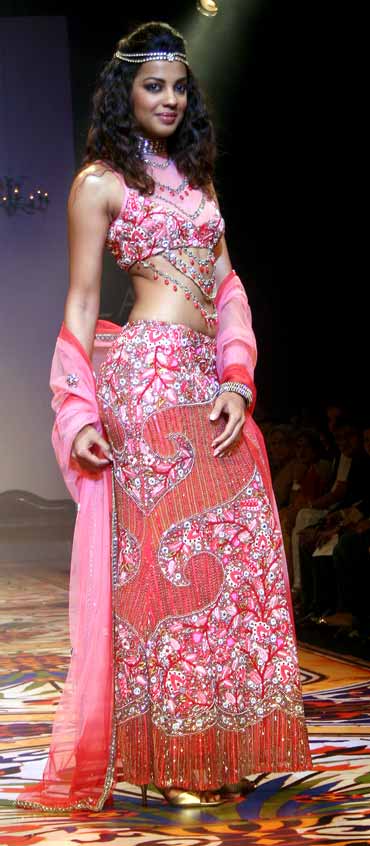
Says designer Sujata Sarawagi, who prefers to be known as a textile designer rather than a fashion designer: "I never identify myself with the typical trends in fashion and as a result, I can't create such wares though they might be in great demand."
"True, the rich exotic look is immensely popular, especially in the bridal market, but it simply does not fit my sense of design and fashion. I would never wear them and so why create something which I would never wear myself?"

Like Sujata, a large chunk of younger people now seem to be passing up traditional fashion patterns.
"Many of the garments from so-called fashion designers are so tacky -- they are strictly pass , like the 'K' television serials. In fact, the decorated saris, long hair worn loose, large bindis and heavy ornate jewellery were essentially a look promoted by soap operas. With this craze fading, the demand for such a look is also waning," says advertising executive Ranjabati Sarkar, who feels she has her own unique sense of style.
Her friend Nimisha agrees and says: "Besides, who can afford to buy them? Such clothes are definitely not for common people!"
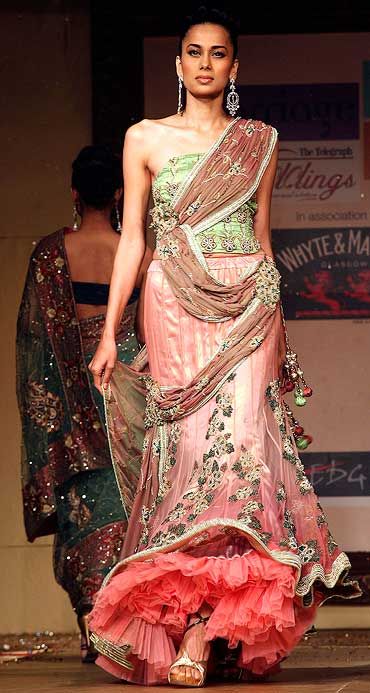
Designer Jaya Misra who specialises in bridal-wear, however, disagrees.
"There is and will always be a demand for such outfits, especially as part of the trousseau. At weddings, people want to depict the rich, exotic look and so these garments are in high demand," she says.
Nonetheless, even Jaya agrees that often this demand for a similar look creates a challenge to the designer and she has to find uniqueness while maintaining the same flavour.
"Personally, I am well known for my rich bridal designs but at times even I need to take a break from the ongoing trend. So some time ago, I launched my 'Peace' collection, that sought to capture the simplicity of Indian designs by making optimal use of Indian fibres like khadi," she explains.
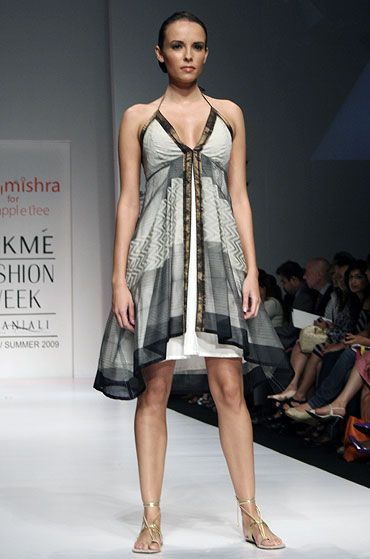
Whatever be the mode of expression of the designer, each garment created should have a sense of purpose; only then can it meet the expectation of a customer, according to designer Rahul Mishra, who is hailed as the next Sabyasachi of the Indian fashion circuit.
Rahul was recently in Kolkata to showcase his latest collection in a newly opened store. Known for his innovative ideas on traditional fabric, Rahul feels that India has a rich repertoire of unique fabrics and patterns which are yet to be discovered. "As a designer, it is my duty to find them and give a new meaning to these traditional forms so that they are accepted by the contemporary generation," he says.

As good as his word, Rahul endorses organic fabrics and slow processes, and works with traditional rural textile designers promoting ethnic fabrics and patterns by imbibing in them a contemporary look.
He reiterates that the time has come for Indian fashion to stand on its own. "India needs to find her own sustainable model of growth and similarly, Indian fashion needs to delve into its own roots and find patterns which are acceptable globally and yet which staunchly uphold their Indian-ness," he says.
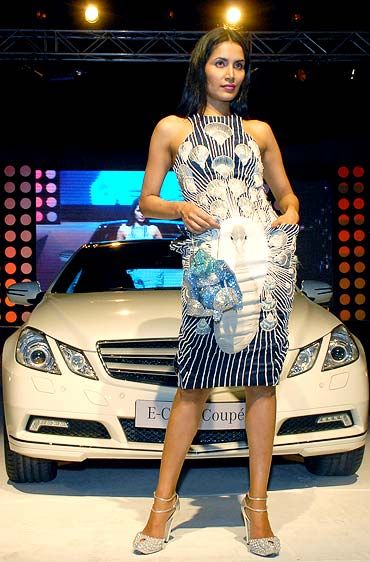
"Why do these patterns need to be the same cliched ones?" questions Fahd Hussein of brand Onseed, which is slowly but steadily capturing a client base among the metro youth who are fascinated by its iconoclastic designs.
"The Indian fashion scene today is intensely boring -- the same designs are being replicated again and again. Why does a traditional Indian pattern need to be an image of Krishna, Radha or a peacock, for example? Even offbeat motifs, like say, posters of B-grade Ramsay movies or political pamphlets can create images which are intrinsically Indian," Hussein says.
Onseed is run by an artist collective (and not the usual fashion designers) with a core team that has Fahd Hussein, Somil Vakharia, Shible Ali and Hamza Hussein as members. They aim at creating garments that are not for "anybody boring." Indian youth, they feel, is ready for such "alternative fashion" and the brand members are confident that at least for most Indian youth in cities, traditional designerwear is losing relevance.
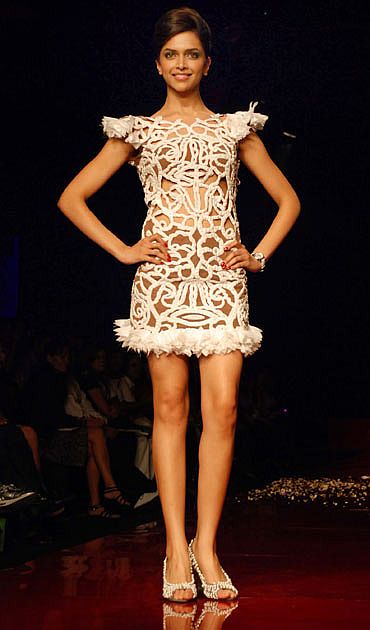
Designer Rina Dhaka, however, is skeptical about the Indian consumer as well. "In most cases, Indian clients are reluctant to experiment; when they are buying designerwear, they are rather eager to replicate patterns seen in movies and soaps. They love ornate designs and the concept 'less is more' is yet to catch on," she says.
Rahul counters, "A fashion designer is also responsible to a great extent; s/he needs to imbibe a sense of style among the followers of fashion by creating unique designs which uphold Indian traditions and are yet ready for global acceptance. It is the designer's responsibility to deviate from accepted fare and educate the clientele about new and alternative patterns."